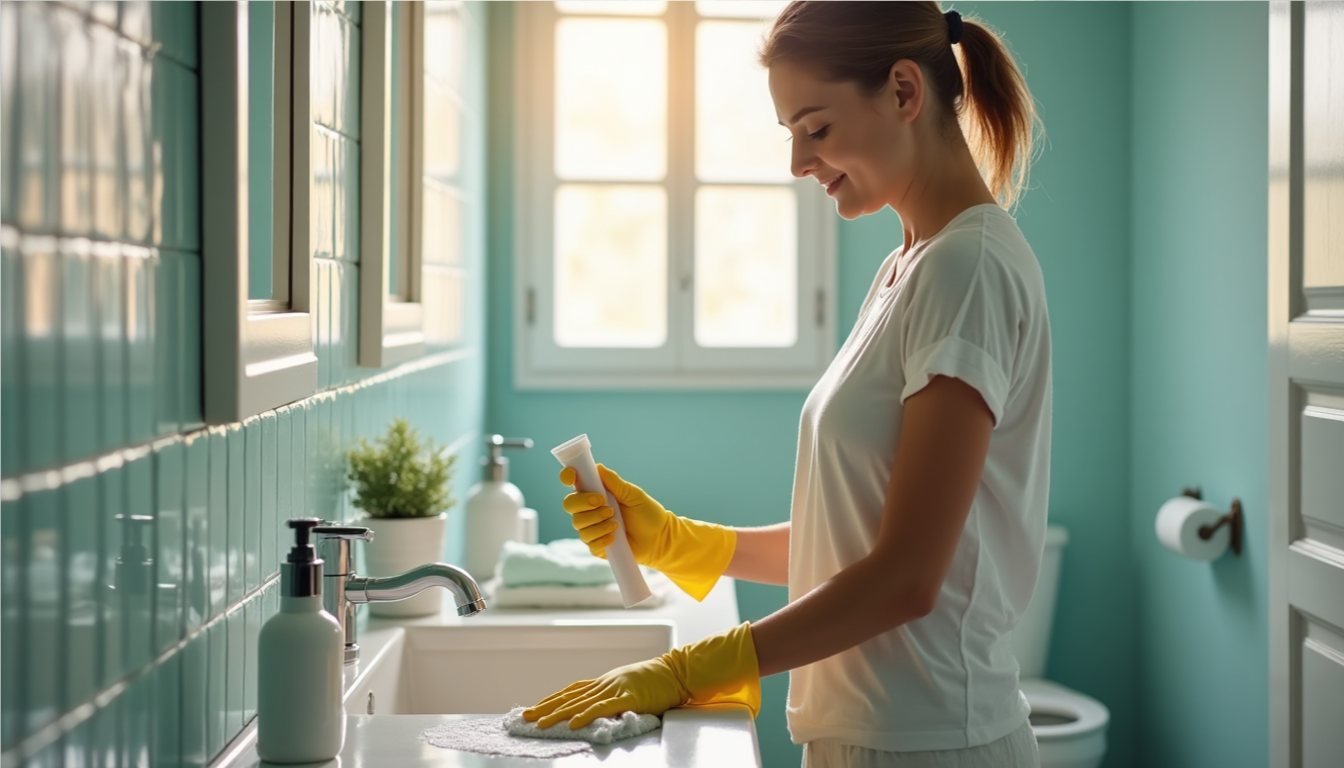
Bathrooms are meant to be places of cleanliness and calm—but anyone who’s ever tackled a deep clean knows just how quickly grime, limescale, and mould can build up. The worst offenders? Grout lines, tile edges, and all those tiny nooks where moisture lingers and dirt hides.
While harsh chemical cleaners might promise quick results, they can be irritating to your skin, harsh on surfaces, and unfriendly to the environment. Fortunately, there are natural, effective ways to restore shine and hygiene to your bathroom—without the eye-watering fumes.
In this guide, we’ll show you how to clean some of the most stubborn spots in your bathroom using gentle but powerful methods.
Why These Areas Are So Difficult To Clean
Grout lines and tile edges are porous and textured, which means they trap dirt, soap residue, and bacteria. Corners and crevices near the bath, shower or sink often stay damp for long periods, creating the perfect environment for mould and mildew to grow.
These areas are fiddly to reach and don’t always respond well to a quick wipe. That’s why they need a more targeted, deeper approach—ideally one that doesn’t involve bleach or heavy-duty commercial cleaners.
Natural Ingredients That Work
Before you begin, stock up on a few cupboard staples that pack a punch when it comes to eco-friendly cleaning:
- Bicarbonate of soda (baking soda) – Mildly abrasive, great for scrubbing without scratching.
- White vinegar – Naturally acidic and excellent for dissolving limescale and soap scum.
- Lemon juice – Has antibacterial properties and helps tackle mould and odours.
- Castile soap – A gentle, plant-based soap that cleans without chemicals.
- Hydrogen peroxide (optional) – A safe disinfectant for whitening grout and killing mould spores. Use with caution and always follow label instructions.
You’ll also want the following tools:
- An old toothbrush or small scrubbing brush
- A spray bottle
- A microfibre cloth or sponge
- A grout brush (if available)
- Cotton wool or cotton buds for corners
Step-By-Step: Cleaning Grout Without Harsh Chemicals
- Make A Bicarbonate And Vinegar Paste
Mix bicarbonate of soda with a little water to form a thick paste. Spread it generously along your grout lines and tile edges.
- Spray With Vinegar
Fill a spray bottle with white vinegar and lightly mist over the paste. It will fizz and bubble—this is the reaction that lifts dirt and grime from the surface.
- Scrub The Grout
Use a toothbrush or grout brush to work the paste into the grout lines. Scrub in circular motions and pay attention to any discoloured areas.
- Rinse And Wipe
Once scrubbed, wipe away the residue with a damp microfibre cloth and rinse with warm water. For badly stained grout, you may need to repeat the process or leave the paste on for 10–15 minutes before scrubbing.
- (Optional) Use Hydrogen Peroxide For Stubborn Mould
For mould that won’t budge, apply hydrogen peroxide directly to the affected area using a cotton bud. Leave for 10 minutes before scrubbing and rinsing. Always wear gloves and ventilate the area well.
Tackling Tile Edges And Bathroom Nooks
Bath And Shower Edges
These areas often trap soap scum and black mould. To clean them:
1) Sprinkle bicarbonate of soda along the seam.
2) Spray vinegar and allow it to fizz for a few minutes.
3) Scrub using a toothbrush or cotton bud to get into corners.
4) Rinse thoroughly and dry the area with a towel or cloth to prevent further moisture build-up.
Around Taps And Fittings
Use an old toothbrush dipped in lemon juice or vinegar to scrub around the base of taps, handles, and joints. If limescale is present, wrap the area in a vinegar-soaked cloth and leave for 20 minutes before scrubbing.
Silicone Seals And Edges
Mould on silicone sealant can be a challenge. If vinegar and bicarbonate don’t shift it, try applying a paste of bicarbonate and hydrogen peroxide. For persistent mould, consider whether the sealant needs replacing altogether.
Preventing Future Build-Up
Keeping your bathroom dry and ventilated is the best way to prevent grime and mould from returning. Try the following:
- Use a squeegee after showers to remove water from tiles and glass.
- Wipe down corners with a dry cloth after use.
- Open windows or run an extractor fan during and after bathing.
- Seal grout lines every 6–12 months with a grout sealer to protect against moisture.
- Clean little and often—a quick scrub every week prevents dirt from becoming a major job.
Natural But Effective!
Grimy grout and mildewed corners can make even the cleanest bathroom feel neglected. But with the right approach, you don’t need harsh chemicals to restore freshness and sparkle. Natural ingredients like vinegar, lemon, and bicarbonate of soda are surprisingly effective, especially when combined with a bit of elbow grease and the right tools.
By tackling these problem spots regularly and using gentle, sustainable methods, you’ll not only maintain a cleaner bathroom—you’ll also create a healthier environment for your household.
